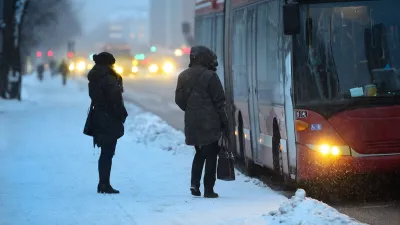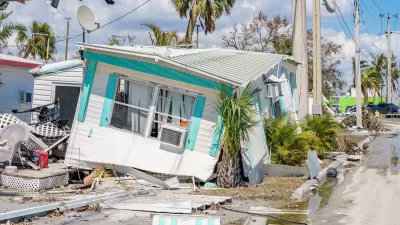The head of the Philippines delegation at the United Nations Framework Convention on Climate Change in Warsaw suggests climate change is responsible for Typhoon Haiyan. Is he right? Quartz investigates the connection.
While the short answer is likely "no", there is a strong connection to the damage caused by Typhoon Haiyan and climate change nonetheless. Heather Timmons notes that "(t)he Philippines, a collection of thousands of islands, is ranked the third-most vulnerable (PDF) nation in the world to climate change caused by the effects of greenhouse gases."
There have been no conclusive scientific studies finding that storms are getting more frequent or stronger in the Pacific Ocean, but the destruction wrought by Haiyan, known as Yolanda in the Philippines, marks the third year in a row that the island nation has been hit by such a deadly storm. It will also be the sixth year in a row that a storm has cost the country hundreds of millions of dollars in damage.
Yeb Sano, the Filipino delegate spoke of the devastation wrought by Haiyan in an emotional speech at the climate talks, and "said he will stop eating until participants make 'meaningful' progress," reports BBC's Matt McGrath. The Warsaw Climate Change Conference is the next round of Kyoto Protocol discussions.
One issue to be discussed, relevant to addressing the costs of the typhoon, pegged at $14 billion according to one analyst, "is the idea of developing a way to compensate poorer countries for damage caused by climate change," writes Timmons.
At the climate convention, "(d)elegates are trying to craft by 2015 a global deal to cut emissions. Scientists warn that rising temperatures threaten to make tropical cyclones such as Haiyan more intense," writes Alex Morales of Bloomberg News.
FULL STORY: Should the Philippines bill developed nations for the damage from Typhoon Haiyan?

Maui's Vacation Rental Debate Turns Ugly
Verbal attacks, misinformation campaigns and fistfights plague a high-stakes debate to convert thousands of vacation rentals into long-term housing.

Planetizen Federal Action Tracker
A weekly monitor of how Trump’s orders and actions are impacting planners and planning in America.

San Francisco Suspends Traffic Calming Amidst Record Deaths
Citing “a challenging fiscal landscape,” the city will cease the program on the heels of 42 traffic deaths, including 24 pedestrians.

Defunct Pittsburgh Power Plant to Become Residential Tower
A decommissioned steam heat plant will be redeveloped into almost 100 affordable housing units.

Trump Prompts Restructuring of Transportation Research Board in “Unprecedented Overreach”
The TRB has eliminated more than half of its committees including those focused on climate, equity, and cities.

Amtrak Rolls Out New Orleans to Alabama “Mardi Gras” Train
The new service will operate morning and evening departures between Mobile and New Orleans.
Urban Design for Planners 1: Software Tools
This six-course series explores essential urban design concepts using open source software and equips planners with the tools they need to participate fully in the urban design process.
Planning for Universal Design
Learn the tools for implementing Universal Design in planning regulations.
Heyer Gruel & Associates PA
JM Goldson LLC
Custer County Colorado
City of Camden Redevelopment Agency
City of Astoria
Transportation Research & Education Center (TREC) at Portland State University
Jefferson Parish Government
Camden Redevelopment Agency
City of Claremont




























